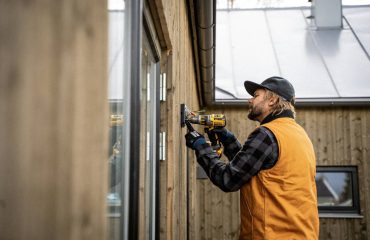
For several years, we have been working on training in the use of fall protection equipment. We have collected most of the questions and issues we receive from our customers and here you will find the answers.
Fall protection training – who needs it?
In order to be approved to use fall protection equipment, both theoretical and practical training is required. The training gives you the necessary knowledge about:
The structure of the equipment
Operation and use
Properties and areas of use
Inspection and maintenance
In addition, the Working Environment Act requires that those who plan and manage work at height have sufficient knowledge to ensure that the work is carried out in a safe and responsible manner.
What is fall protection?
Fall protection is a common term for the use of equipment to prevent falls to a lower level. Fall protection is also about the use of personal protective equipment (PPE) to prevent falls.
Why take a fall protection course?
All work at height should be carried out safely and under good ergonomic conditions. When this cannot be done without the use of equipment, the employer has a duty to ensure that appropriate fall protection equipment is used. The aim is to ensure safe working conditions and reduce the risk of accidents. It is a legal requirement that training is provided and that this training is documented.
Who can take the course?
Personnel who will be using fall protection equipment.
What do you learn during the course?
The fall protection course covers the following topics:
Risks from falling objects
Fall energy and consequences
Regulations for working at heights
Collective and personal protective measures
Marking and inspection of personal protective equipment
Securing tools and materials.
How long does the certificate of competence last?
The certificate of competence is valid without an expiry date. However, it is important that you assess whether you are still fit to work with fall protection equipment. If it has been a long time since you last worked at height, it is recommended that you retake the course to refresh your knowledge.
When should I use fall protection equipment?
In any situation where there is a possibility of falling, it should be assessed whether the use of fall protection equipment is necessary. If there is a risk of a fall of 2 meters or more, fall protection equipment should be used. In some situations, fall protection equipment may be required even if there is a risk of falling less than 2 meters.
What types of fall protection do we have?
There are three types of fall protection: Personal fall protection equipment, fixed systems and collective fall protection.
How often should fall protection equipment be checked?
According to standard EN 365, all personal fall protection equipment must be inspected at least once a year. This annual inspection must be more thorough than the daily visual inspection carried out by the user and must be documented in writing.
Is there a requirement for fall protection for scaffolders?
Yes – the rules require all scaffolders to be trained in the use of fall protection equipment.
What marking fall protection equipment must have?
Fall protection equipment that is to be used must be CE marked and have a clear identification marking that includes the manufacturer’s name, serial number, production date and information about the standard to which the equipment has been tested and certified.
How do I know that fall protection equipment fits?
Before using fall protection equipment, harnesses and belts should be tested to ensure that they fit the user correctly and provide optimal comfort and safety. It is important that the equipment is adjusted correctly according to body size and work situation. The user should always follow the manufacturer’s instructions for use.
What do protection classifications mean for fall protection equipment?
Fall protection equipment is divided into three main classes, depending on the function and load it must withstand during normal use. Each class represents a specific area of application within work at height:
Active systems – to prevent falls (positioning harnesses, rope systems)
Passive systems – to catch falls (body harness with fall arrester and line)
Rescue systems – rescue the injured person (evacuation equipment, hoist systems, rescue harnesses).
We at Instant Kurs AS have for many years provided training in fall protection and offer both interactive online courses and practical training. If you have further questions about fall protection course, please feel free to contact us.





